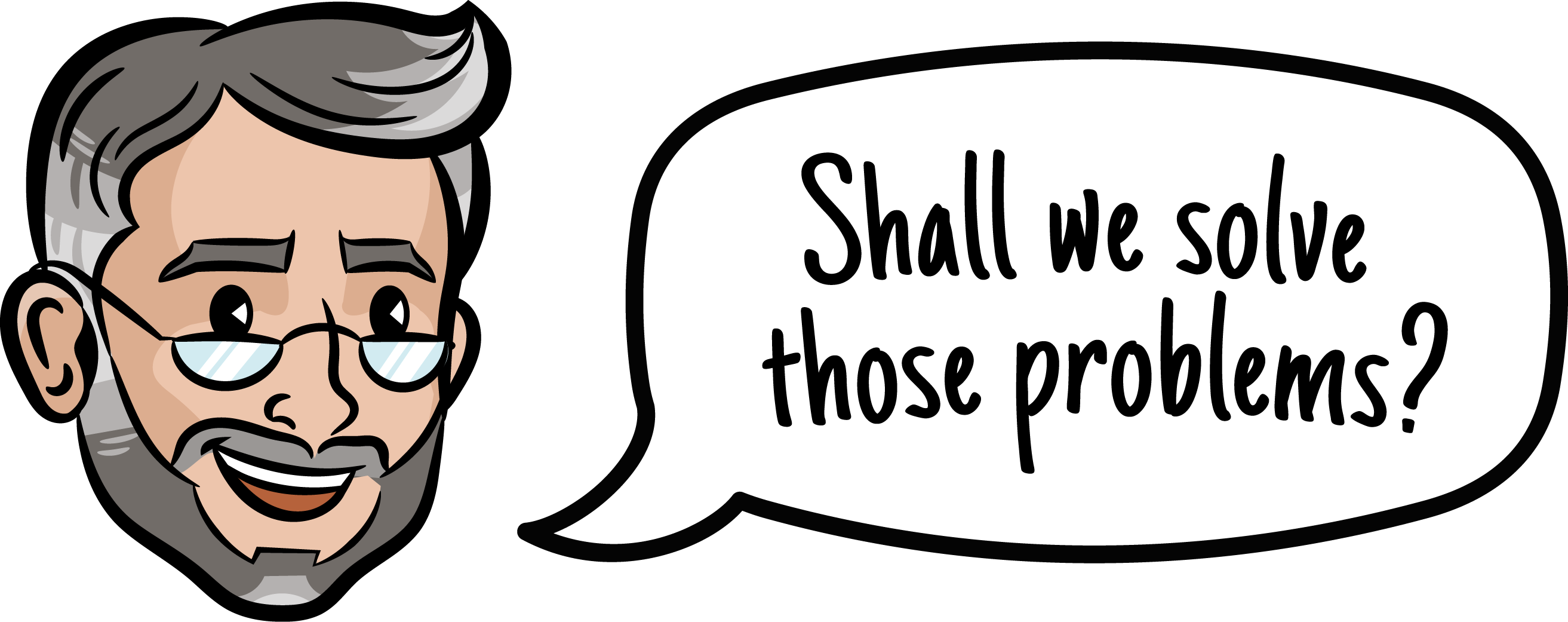Table of Contents
Defining Inside Sales: The Foundation of Modern Sales Operations
Inside Sales vs. Outside Sales: Understanding the Key Differences
Deconstructing Inside Sales Responsibilities and Roles
The Strategic Advantages: Benefits of Adopting an Inside Sales Model
Integrating Inside Sales into the Overall Sales Team Structure
Useful Related Posts from Sales Funnel Professor
For sales leaders navigating the complexities of building high-performing revenue teams, few areas present as much strategic opportunity—and occasional confusion—as the distinction and integration of inside and outside sales models. A common misconception is viewing inside sales merely as a lower-cost, less sophisticated version of traditional field sales. In reality, understanding the modern ‘inside sales meaning’ is essential for sales leaders to build efficient, scalable sales organizations and effectively deploy resources.
This article aims to provide a definitive and informative exploration of inside sales, moving beyond simple definitions to unpack its strategic implications. We will clarify what inside sales represents today, detail its key responsibilities, compare and contrast it with outside sales, highlight the significant benefits of adopting an inside sales model, and discuss how to strategically integrate it into your overall sales structure. The goal is to equip sales leaders with the foundational knowledge necessary to optimize their sales efforts for the demands of the modern market.

Defining Inside Sales: The Foundation of Modern Sales Operations
At its core, understanding the inside sales meaning is grasping the concept of sales conducted remotely, without the need for face-to-face meetings. This is sales executed primarily from an office location – or increasingly, from a remote work environment – leveraging technology to connect with prospects and customers.
Historically, “inside sales” might have been synonymous with simple telemarketing or order taking. However, the evolution has been dramatic. Driven by technological advancements and shifts in buyer behavior, modern inside sales has transformed into a sophisticated, strategic function capable of handling complex sales cycles, building deep customer relationships, and driving significant revenue. It is no longer just about high-volume, low-value transactions; it’s a primary engine for growth across industries and deal sizes.
Key characteristics that differentiate inside sales from other sales models include:
- Remote Engagement: Interactions happen via phone, email, video conferencing, social selling platforms, and instant messaging.
- Technology Reliance: Heavy dependence on CRM systems, sales engagement platforms, communication tools, and data analytics.
- Data-Driven: Performance is highly measurable due to the digital nature of interactions, allowing for rigorous analysis and optimization.
- Scalability: Easier to onboard, train, and manage teams without geographic constraints, enabling rapid scaling.
- Efficiency Focus: Designed to handle a higher volume of interactions and manage territories or account lists digitally, reducing time spent on travel.
Common misconceptions often paint inside sales as less skilled or less strategic than outside sales. This overlooks the unique expertise required in virtual communication, digital relationship building, and leveraging technology effectively to guide prospects through the sales funnel. The rise of high-speed internet, advanced video conferencing capabilities, and sophisticated sales technology platforms has been the primary enabler for the widespread adoption and success of the inside sales model, allowing teams to be just as effective, if not more so in certain contexts, than their field-based counterparts.
Inside Sales vs. Outside Sales: Understanding the Key Differences
While both inside and outside sales roles share the fundamental objective of generating revenue by converting prospects into customers, their methodologies, cost structures, and day-to-day responsibilities differ significantly. Understanding these distinctions is crucial when designing your sales organization and defining “inside sales meaning” within your specific context.
Methodologies and Approach
The most apparent difference lies in the primary method of engagement. Outside sales representatives traditionally rely on face-to-face interactions, traveling to meet prospects and clients at their locations. Their territory management is often geographically defined by physical proximity.
In contrast, inside sales professionals conduct all their sales activities remotely. Their “territory” is often defined by account lists, industry verticals, or geographic regions managed virtually. Communication channels predominantly include phone calls, emails, video conferences (like Zoom or Google Meet), and leveraging platforms for digital outreach and social selling.
The nature of the sales cycle can also differ. While modern inside sales teams are increasingly handling complex, high-value deals, outside sales has historically been associated with longer, more intricate sales cycles requiring multiple in-person meetings to build rapport, conduct extensive discovery, and navigate complex organizational structures. The relationship-building approach for outside sales is often based on personal presence and on-site interaction, whereas inside sales builds relationships through consistent, valuable digital communication and virtual engagement.
Cost Structure and Efficiency
A significant strategic advantage of the inside sales model lies in its cost structure. Inside sales teams inherently have lower expenses per representative compared to outside sales. Travel and entertainment (T&E) costs—including flights, accommodation, meals, and mileage—are drastically reduced or eliminated.
This lower overhead per representative contributes directly to a lower cost of sale. Furthermore, the inside sales model is highly conducive to scalability. Adding a new inside sales rep typically requires a desk, a computer, a phone/headset, and software licenses – a far less complex and costly undertaking than equipping a new outside sales rep with travel budgets and potentially requiring office space in diverse locations.
The efficiency of inside sales also stems from the ability to manage a higher volume of leads or accounts within a given timeframe. Without travel time between meetings, inside reps can schedule back-to-back virtual interactions, make more calls, send more emails, and engage with a larger number of prospects daily. This enhanced activity volume is a key aspect of the benefits of inside sales model when seeking operational efficiency.
Role Focus and Responsibilities
The day-to-day activities and primary focus for inside sales vs outside sales roles vary considerably. Inside sales roles are heavily focused on leveraging digital tools and mastering communication via remote channels. Proficiency with CRM systems, sales engagement platforms, and virtual meeting software is paramount.
Inside sales responsibilities typically involve:
- Conducting proactive outbound prospecting (cold calling, email outreach).
- Handling and qualifying inbound inquiries (leads generated by marketing).
- Performing product demonstrations and presentations virtually.
- Negotiating contracts and closing deals remotely.
- Managing and nurturing relationships with a portfolio of accounts or leads digitally.
- Utilizing data within the CRM to track progress, manage pipelines, and report on activities.
Outside sales roles, while also using CRM and technology, have a stronger emphasis on:
- Physical territory management.
- Building rapport through in-person meetings and events.
- Conducting site visits or physical product demonstrations.
- Navigating complex organizational hierarchies face-to-face.
- Managing potentially longer and higher-value sales cycles that traditionally necessitated personal presence.
Both roles require strong sales skills, but the application and daily execution differ based on the interaction model and the tools leveraged.
Deconstructing Inside Sales Responsibilities and Roles
A deeper dive into the standard inside sales responsibilities reveals a structured approach aligned with the modern sales funnel. Rather than one monolithic “inside sales” role, successful organizations often segment responsibilities to increase efficiency and specialization across different stages of the buyer’s journey.
Common responsibilities include initial lead qualification, conducting discovery calls, performing virtual product demonstrations, managing the sales pipeline, negotiating terms, and ultimately closing deals – all executed remotely. These responsibilities are often mapped to specific roles within an inside sales team, creating a predictable and scalable process.
Specific Inside Sales Roles
Modern inside sales teams are frequently organized into specialized roles, reflecting a maturation of the model and a recognition of the unique skills required for different parts of the sales cycle.
Sales Development Representatives (SDRs)
SDRs are typically focused on the early stages of the sales funnel, specifically handling inbound leads generated by marketing efforts. Their primary inside sales responsibilities include:
- Responding quickly to inbound inquiries (like form fills, demo requests).
- Qualifying leads based on criteria like budget, authority, need, and timeline (BANT) or similar frameworks.
- Understanding the prospect’s pain points and needs at a high level.
- Conducting initial outreach and discovery calls.
- Setting qualified meetings or appointments for Account Executives.
Key metrics for SDRs often revolve around activity volume (calls made, emails sent) and output (number of qualified meetings booked). Their role is crucial in ensuring that valuable AE time is spent only on leads that have a high probability of conversion.
Business Development Representatives (BDRs)
While often grouped with SDRs, BDRs typically focus on proactive outbound prospecting. Their inside sales responsibilities center around generating new leads from target accounts or markets that may not have previously engaged with the company. This involves:
- Researching potential target accounts and contacts.
- Identifying key decision-makers and influencers.
- Developing tailored outreach strategies (cold calls, personalized emails, social selling).
- Executing cold outreach campaigns to generate interest.
- Qualifying outbound-generated leads to determine if they fit the ideal customer profile.
- Setting qualified meetings or appointments for Account Executives.
BDRs require strong research skills, persistence, and creativity in breaking through the noise to engage prospects who aren’t actively seeking a solution.
Account Executives (Inside Sales AEs)
Inside Sales AEs manage the sales cycle from the point a lead is qualified (often by an SDR or BDR) through to closing the deal. Their inside sales responsibilities are comprehensive and include:
- Conducting in-depth discovery to fully understand prospect needs and challenges.
- Developing and delivering compelling virtual product demonstrations and presentations.
- Building champion relationships within the prospect organization, albeit remotely.
- Navigating internal approval processes and addressing objections.
- Negotiating pricing and contract terms.
- Closing the deal and handing off the new customer to an onboarding or customer success team.
Inside Sales AEs often manage territories based on factors like industry, company size, or geographic region (managed virtually). They need strong closing skills, expertise in virtual communication tools, and the ability to manage complex deal cycles without the benefit of in-person interactions.
Other potential inside sales roles can include Account Managers focused on expanding relationships with existing customers remotely or specialized roles handling specific products or services.
The Strategic Advantages: Benefits of Adopting an Inside Sales Model
Inside sales offers powerful advantages that go far beyond cost savings. For sales leaders optimizing their go-to-market strategy, understanding these benefits is essential.
Efficiency and Productivity: Without the need for travel, inside sales reps can dedicate more time to direct selling—conducting calls, demos, and managing pipelines. This results in higher output per rep.
Scalability: Inside sales teams are easier and less expensive to scale. Hiring and onboarding new reps is faster, requiring only software and systems—not travel budgets or remote offices.
Lower Cost of Sale: Reduced travel, entertainment, and overhead directly decrease cost per acquisition, improving overall ROI.
Market Reach: A centralized inside sales team can target national or global markets without needing a physical presence. This opens up new territories that outside sales may not cost-effectively reach.
Better Data Visibility: Digital interactions are easily tracked. CRMs log every call, email, and meeting, giving sales leaders real-time insights into activity, conversion rates, and performance for better forecasting and decision-making.
Collaboration: Inside sales teams, whether remote or co-located, benefit from easier collaboration, real-time training, and shared best practices—unlike outside reps who often work independently.
Adaptability: Inside sales teams can quickly respond to changes in buyer behavior or market dynamics. Launching new campaigns or refining messaging is faster within a digital-first model.
As modern buyers shift toward virtual engagement, the inside sales model is uniquely equipped to meet them. It delivers scalability, visibility, and agility—making it a cornerstone of high-performing revenue organizations.
Integrating Inside Sales into the Overall Sales Team Structure
Most high-performing sales organizations don’t rely on just one model. Instead, they integrate inside sales alongside outside sales, partner channels, and customer success teams. The key is strategic alignment—clear roles, streamlined handoffs, and strong collaboration.
Inside sales (SDRs and BDRs) often manage early-funnel activities like lead qualification before handing off to AEs. Depending on deal size or complexity, that AE could be inside or outside sales. This division lets inside teams handle volume efficiently, while outside reps focus on strategic, high-touch deals.
Marketing, inside sales, and outside sales must collaborate closely. Marketing drives lead generation, inside sales qualifies those leads, and outside sales closes major opportunities. Feedback loops and regular syncs ensure leads flow smoothly through the funnel.
Technology plays a critical role in this structure. CRMs and engagement platforms centralize data, automate outreach, and enable seamless collaboration. Integrated systems ensure transparency, improve forecasting, and enhance accountability.
Sales leaders must tailor this mix based on product complexity, deal value, and market needs. High-volume or geographically diverse markets may lean on inside sales. Complex enterprise sales often demand face-to-face engagement from outside reps.
Ultimately, understanding the modern inside sales meaning helps leaders build scalable, efficient sales organizations. Rather than choosing between inside or outside sales, the most effective teams deploy both—strategically aligned to customer journey stages and revenue goals.
Useful Blogs from Sales Funnel Professor
Strengthen your sales leadership knowledge and build a high-performing revenue engine with these strategic reads:
- Sales Strategy for Predictable Growth
Discover how to align your team, tools, and tactics with a clear sales strategy built for scalability and sustainable growth. - Sales Qualification Definition
Master the art of identifying high-potential leads with this comprehensive definition and framework for qualification. - Marketing Funnel vs. Sales Funnel
Understand the key differences—and how alignment between marketing and sales funnels can dramatically improve conversion rates. - Sales Dashboard
Explore how real-time dashboards empower leaders with insights to drive performance and coach with data. - Sales Operations Strategy Definition
Learn how sales ops supports growth through process optimization, data governance, and tech stack alignment.


